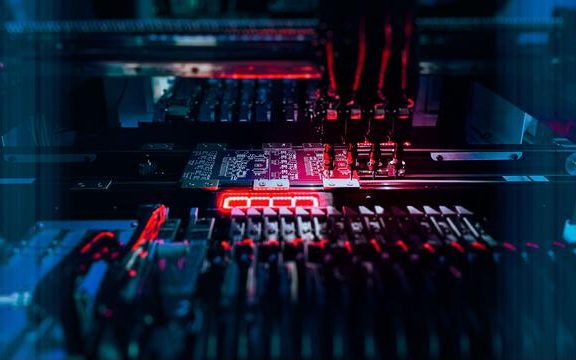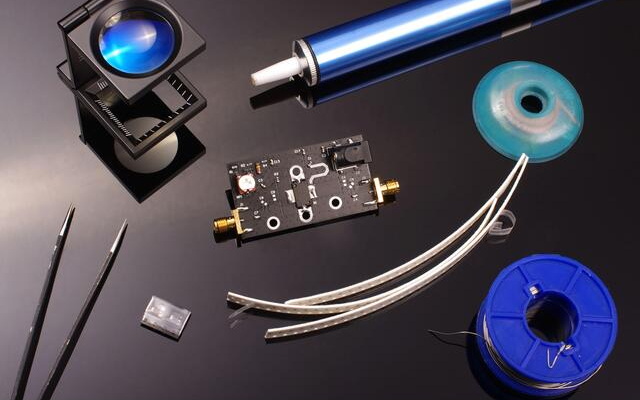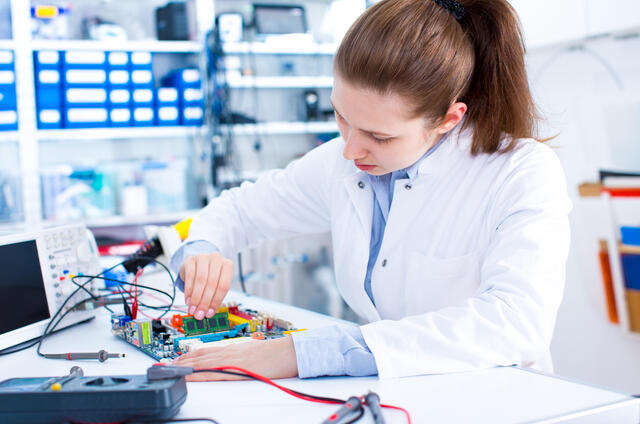Content Menu
● Understanding PCB SMT Production Lines
>> What is an SMT Production Line?
>> Key Components of an SMT Production Line
● Cost Breakdown of Setting Up an SMT Production Line
>> 1. Equipment Costs
>> 2. Facility Costs
>> 3. Labor Costs
>> 4. Additional Costs
● Factors Influencing the Cost of an SMT Line
● Why Choose China for PCB SMT Solution Lines?
>> 1. Cost Efficiency
>> 2. Advanced Technology
>> 3. Comprehensive Solutions
>> 4. Flexibility
● Key Considerations Before Setting Up an SMT Line
● Conclusion
● FAQs
>> 1. What is the average cost of setting up an SMT line in China?
>> 2. How long does it take to set up an SMT production line?
>> 3. What are the benefits of using an SMT line over traditional assembly methods?
>> 4. Can I start with a semi-automatic SMT line?
>> 5 Why inspection equipment matters so much within any modern-day factory setup?
Setting up a PCB SMT (Surface Mount Technology) production line is a complex and capital-intensive process that requires careful planning and investment. SMT production lines are essential for assembling modern electronic devices, as they enable the precise placement of components on Printed Circuit Boards (PCBs). Whether you are a startup or an established manufacturer, understanding the costs involved in setting up an SMT line is crucial for budgeting and long-term success.
In this article, we will explore the cost components, factors influencing these costs, and why China PCB SMT solution lines have become a preferred choice for businesses worldwide. By the end of this comprehensive guide, you will have a clear understanding of what it takes to build an efficient SMT production line.

Understanding PCB SMT Production Lines
What is an SMT Production Line?
An SMT production line is a manufacturing system designed to automate the assembly of electronic components onto PCBs. Unlike traditional through-hole technology, where components are inserted into drilled holes on the PCB, SMT places components directly onto the board's surface. This method allows for higher component density, smaller device footprints, and faster production cycles.
The typical SMT production process involves several key stages:
1. Solder Paste Application: Solder paste is applied to the PCB using a stencil printer.
2. Component Placement: Components are precisely placed onto the solder-pasted areas by pick-and-place machines.
3. Reflow Soldering: The PCB is heated in a reflow oven to melt the solder paste, securing the components.
4. Inspection: Automated systems check for defects in soldering and component placement.
5. Testing: Functional testing ensures that the assembled PCB meets design specifications.
Key Components of an SMT Production Line
To set up an efficient SMT line, you need the following equipment:
1. Stencil Printer: Applies solder paste to the PCB with high precision.
2. Pick-and-Place Machine: Automatically places electronic components on the board at high speed.
3. Reflow Oven: Heats the assembly to melt and solidify solder paste.
4. Conveyor System: Moves PCBs between different stages of assembly.
5. Inspection Systems:
- SPI (Solder Paste Inspection) ensures proper application of solder paste.
- AOI (Automated Optical Inspection) checks for placement accuracy and soldering defects.
Each piece of equipment plays a critical role in ensuring that the final product meets quality standards.
Cost Breakdown of Setting Up an SMT Production Line
Setting up an SMT production line requires significant financial investment. Below is a detailed breakdown of the costs involved:
1. Equipment Costs
The largest portion of your budget will go toward purchasing machinery. Here's a closer look at typical costs:
- Pick-and-Place Machines: These machines are often considered the heart of an SMT line. High-speed models capable of placing 100,000+ components per hour (CPH) can cost between $500,000 and $700,000 per unit. Mid-range machines with lower capacity are more affordable, ranging from $100,000 to $200,000.
- Stencil Printers: Prices vary based on automation levels. Manual printers cost as little as $5,000, while fully automated models can range from $10,000 to $50,000.
- Reflow Ovens: A standard reflow oven costs between $20,000 and $80,000 depending on size and features like multi-zone temperature control.
- Inspection Systems (SPI & AOI): These systems are critical for quality control and can cost between $30,000 and $100,000 each.
For a basic automated SMT line with mid-range equipment, expect to spend at least $300,000 on machinery alone.
2. Facility Costs
The physical space where your SMT line operates must meet certain requirements:
- Antistatic Flooring: Essential to prevent electrostatic discharge that could damage sensitive components.
- Cleanroom Environment: Some high-end applications may require cleanroom conditions to avoid contamination.
- HVAC Systems: Temperature and humidity control is vital for consistent soldering quality.
Facility setup costs typically range from $50,000 to $200,000 depending on location and size.

3. Labor Costs
Although SMT lines are highly automated, skilled personnel are still required for:
- Operating machines and managing production schedules.
- Performing maintenance and troubleshooting issues.
- Conducting quality inspections and functional testing.
Labor costs vary significantly by region. For instance, in China—known for its competitive labor rates—costs are substantially lower than in Western countries.
4. Additional Costs
Other expenses to consider include:
- Training Programs: Operators and engineers need proper training to handle advanced machinery.
- Software Licenses: Many machines require proprietary software for programming and monitoring.
- Maintenance Costs: Regular servicing ensures optimal performance and prevents costly downtime.
Factors Influencing the Cost of an SMT Line
Several factors can impact the overall cost of setting up an SMT production line:
1. Production Volume
- High-volume production justifies investment in fully automated lines with advanced features.
- Low-volume or prototype production may opt for semi-automated setups to reduce initial costs.
2. Complexity of PCBs
- Dense boards with fine-pitch components require more sophisticated equipment capable of high precision.
- Simple designs can be manufactured using less expensive machinery.
3. Customization Needs
- Tailored solutions for specific industries or products may increase costs but offer long-term benefits in terms of efficiency and output quality.
4. Location
- Setting up in regions like China offers significant cost advantages due to lower labor rates, proximity to suppliers, and government incentives for manufacturing industries.
Why Choose China for PCB SMT Solution Lines?
China has established itself as a global leader in PCB manufacturing and SMT solutions due to several compelling reasons:
1. Cost Efficiency
China offers some of the most competitive pricing for both equipment and labor globally. Local manufacturers benefit from economies of scale and streamlined supply chains that reduce costs without compromising quality.
2. Advanced Technology
Chinese manufacturers have invested heavily in state-of-the-art machinery capable of handling complex designs like Ball Grid Arrays (BGAs), multi-layer PCBs, and fine-pitch components.
3. Comprehensive Solutions
Many Chinese companies provide end-to-end services that include design assistance, prototyping, mass production, and even logistics support. This one-stop-shop approach simplifies project management for international clients.
4. Flexibility
Whether you need small-batch prototyping or large-scale production runs, China's manufacturers can adapt quickly to meet your requirements.
Key Considerations Before Setting Up an SMT Line
Before committing to an investment in an SMT production line, consider these critical factors:
1. Evaluate your current production needs and future scalability requirements.
2. Research potential suppliers thoroughly to ensure they meet international quality standards.
3. Factor in hidden costs such as shipping fees for imported equipment or taxes on capital goods.
4. Plan for regular upgrades as technology evolves rapidly in this industry.
Conclusion
Setting up a PCB SMT production line is a significant investment that requires careful planning and budgeting. Costs can range from hundreds of thousands to millions of dollars depending on factors like equipment type, production volume, facility requirements, and location.
For businesses looking to optimize costs without compromising quality, partnering with a reliable manufacturer in China is an excellent option. With its advanced technology infrastructure, competitive pricing models, and comprehensive solutions tailored to client needs, China remains at the forefront of global PCB manufacturing.
By understanding the cost structure and leveraging resources wisely—whether through local partnerships or strategic investments—you can establish a successful SMT production line that meets your business goals.

FAQs
1. What is the average cost of setting up an SMT line in China?
The cost varies widely but typically ranges from $300,000 for basic setups to over $8 million for advanced high-capacity lines with cutting-edge features.
2. How long does it take to set up an SMT production line?
It usually takes 3–6 months for installation and testing depending on factors such as equipment availability and facility readiness.
3. What are the benefits of using an SMT line over traditional assembly methods?
SMT lines offer higher efficiency, better heat dissipation capabilities due to compact designs, reduced material waste during assembly processes compared with through-hole methods.
4. Can I start with a semi-automatic SMT line?
Yes! Semi-automatic lines work well if you're starting small-scale operations or prototyping before scaling into mass-production operations later down-the-line!
5 Why inspection equipment matters so much within any modern-day factory setup?
Inspection systems like SPI/AOI ensure product consistency by catching errors early-on reducing costly rework downstream improving yield-rates ultimately boosting ROI margins significantly!




















